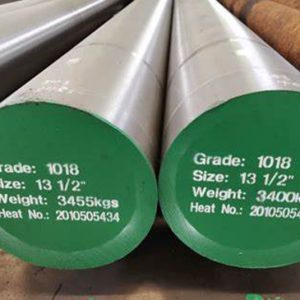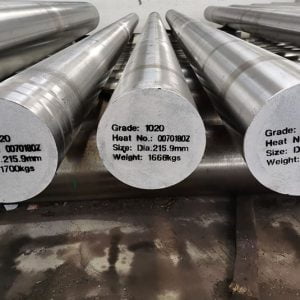Introduction

Steel is an indispensable material in modern society, with its applications spanning across construction, manufacturing, transportation, and infrastructure. Its versatility and durability stem from a unique combination of mechanical and physical properties, including its exceptional strength, ductility, and resistance to corrosion. Among these properties, the thermal properties of steel play a crucial role in determining its performance in various applications.
Defining Thermal Properties
Thermal properties encompass the characteristics of a material that govern its behavior in response to temperature changes. These properties are essential for understanding how steel interacts with heat, influencing its ability to conduct, store, and radiate heat.
Thermal Conductivity: Thermal conductivity (k) measures a material’s ability to transfer heat from one part to another. It is quantified as the rate of heat flow per unit temperature difference per unit area and thickness. A higher thermal conductivity indicates that the material conducts heat more efficiently.
Specific Heat Capacity: Specific heat capacity (c) represents the amount of heat energy required to raise the temperature of a unit mass of a material by one degree Celsius. It is expressed in units of joules per kilogram per degree Celsius (J/kg°C). A higher specific heat capacity indicates that the material can store more heat energy for a given temperature change.
Thermal Expansion: Thermal expansion describes the change in the dimensions of a material as its temperature changes. It is quantified by the linear thermal expansion coefficient (α), which represents the fractional change in length per unit temperature change. A higher thermal expansion coefficient indicates that the material expands or contracts more significantly with temperature fluctuations.
Thermal Diffusivity: Thermal diffusivity (α) characterizes the rate at which heat diffuses through a material. It is calculated by dividing the thermal conductivity (k) by the product of density (ρ) and specific heat capacity (c). A higher thermal diffusivity indicates that the material spreads heat more rapidly.
Emissivity: Emissivity (ε) represents the ability of a material to emit thermal radiation, also known as infrared energy. It ranges from 0 for a perfect reflector to 1 for a perfect emitter. A higher emissivity indicates that the material radiates heat more effectively.
Thermal Properties of Different Steel Grades
The thermal properties of steel vary depending on its composition and microstructure. Alloying elements, such as carbon, manganese, chromium, and nickel, significantly influence the thermal conductivity, specific heat capacity, thermal expansion, and emissivity of steel.
Table: Thermal Properties of Common Steel Grades
| Grade | Composition | Thermal Conductivity (k) [W/mK] | Specific Heat Capacity (c) [J/kg°C] | Linear Thermal Expansion Coefficient (α) [x 10⁻⁶/°C] |
|---|---|---|---|---|
| AISI 1010 (Mild Steel) | 0.10% C, 0.40% Mn | 50 | 500 | 12 |
| AISI 304 (Stainless Steel) | 18% Cr, 8% Ni | 16 | 460 | 17 |
| AISI 4140 (Chromium-Molybdenum Steel) | 1% Cr, 0.2% Mo | 45 | 500 | 11 |
Impact of Thermal Properties on Steel Applications

The thermal properties of steel play a crucial role in its suitability for various applications:
Heat Treatment: The thermal conductivity and specific heat capacity of steel influence its response to heat treatment processes, such as annealing, normalizing, and hardening, which alter the microstructure and mechanical properties of the steel.These processes involve heating the steel to specific temperatures and then cooling it at controlled rates to achieve desired properties. The thermal conductivity of steel determines how quickly heat can be transferred through the material during these processes, affecting the uniformity of heating and cooling. On the other hand, the specific heat capacity of steel influences the amount of heat required to raise its temperature, which is important for determining the energy input needed for heat treatment.
Welding: The thermal diffusivity of steel affects the heat distribution during welding, influencing the formation of weld beads and the potential for distortion or cracking.A higher thermal diffusivity allows for more efficient heat transfer, resulting in faster cooling rates and potentially reducing the size of the heat-affected zone. On the other hand, a lower thermal diffusivity can lead to slower cooling rates, which may increase the likelihood of residual stresses and distortion in the welded structure.
Heat Exchangers: The high thermal conductivity of steel makes it an ideal material for heat exchangers, efficiently transferring heat between fluids.
Cryogenic Applications: The low thermal conductivity of stainless steel at cryogenic temperatures allows it to maintain extremely low temperatures, making it suitable for cryogenic storage and transportation.
Engine Components: The thermal properties of steel, such as its thermal expansion and emissivity, are critical for designing engine components that can withstand high temperatures and stresses while efficiently dissipating heat.
Conclusion: Thermal Properties of Steel
The thermal properties of steel are fundamental to its widespread use and adaptability across diverse applications. Understanding these properties is essential for engineers and designers to select the appropriate steel grade for specific requirements, ensuring optimal performance, safety, and reliability. As technology advances and demands for steel evolve, the exploration and optimization of thermal properties will continue to drive innovation in steel production and utilization.
FAQ
How does the thermal conductivity of steel compare to other metals?
Steel generally has higher thermal conductivity than most other common metals, such as aluminum, copper, and brass. However, some specialized alloys may have higher thermal conductivity than certain steel grades.
Can the thermal properties of steel be modified through heat treatment?
Yes, heat treatment processes such as annealing, quenching, and tempering can alter the thermal properties of steel, including its thermal conductivity, thermal expansion coefficient, and specific heat capacity.
What factors influence the thermal conductivity of steel?
The thermal conductivity of steel is influenced by factors such as its chemical composition, microstructure, temperature, and processing conditions. Generally, steel alloys with higher carbon content and alloying elements exhibit higher thermal conductivity.
How does temperature affect the thermal properties of steel?
Temperature significantly influences the thermal properties of steel. As temperature increases, the thermal conductivity of steel typically decreases, while its thermal expansion coefficient and specific heat capacity may change. Understanding these temperature-dependent variations is crucial for accurate thermal engineering design and performance prediction.
What are some common challenges associated with managing thermal properties in steel structures?
One common challenge is thermal expansion-induced stress, which can lead to dimensional changes, distortion, and structural instability in steel components and structures. Proper design considerations, material selection, and thermal management techniques such as expansion joints and thermal insulation can help mitigate these challenges and ensure the long-term integrity of steel structures.










